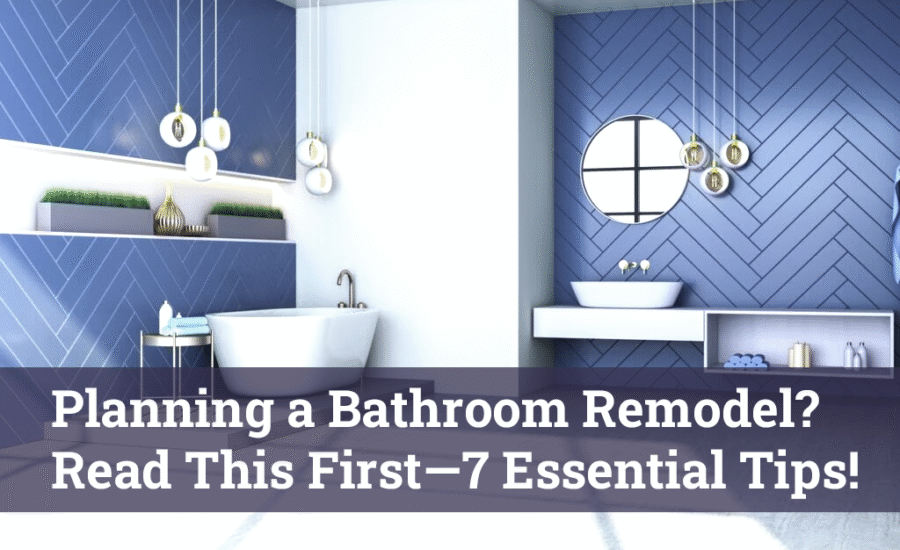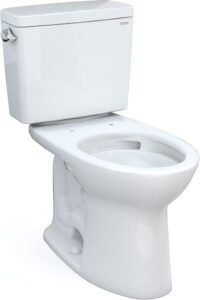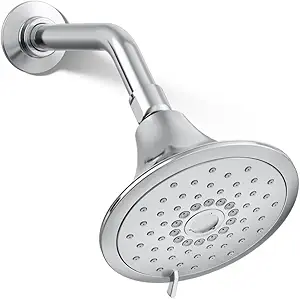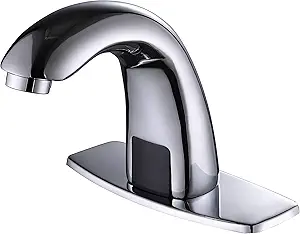7 Must-Knows Before You Remodel Your Bathroom (2025)
So you’re thinking about updating that tired old bathroom? I’ve been designing bathrooms for clients in both New York and California for over a decade, and trust me—it’s always more complicated than those perfect Pinterest posts make it seem.
Whether you’re trying to squeeze more storage into a cramped NYC apartment bathroom or creating a drought-friendly oasis in your California bungalow, I’ve learned what works (and what desperately doesn’t). Here’s what you should know before ripping out that first tile.
1. The Budget Reality Check
Let’s talk money—because bathroom projects almost always cost more than expected. Last year, I worked with a couple in Brooklyn who budgeted $15,000 for their bathroom remodel. Two unexpected pipe replacements later, they were at $19,800.
In 2025, here’s roughly what you’re looking at:
- Basic refresh in California: $9,000-$14,000
- Mid-range renovation in NYC: $18,000-$28,000 (Manhattan? Add 20%)
- High-end remodel anywhere: $35,000+ (I recently finished a $62,000 bathroom in San Francisco that was smaller than most walk-in closets)
My non-negotiable rule: Add 20% to whatever number you think you need. When that 1920s plumbing inevitably surprises you or you fall in love with that Japanese smart toilet, you’ll thank me.
2. Deciding How Deep You Want to Go
Before you demolish anything, decide exactly what kind of project you’re signing up for. Are you just swapping out fixtures, or are we talking full gut renovation? This decision affects everything.
I categorize bathroom projects into three types:
- The Refresh: New fixtures, cosmetic updates, same layout (1-3 weeks)
- The Partial Remodel: Some layout changes, upgraded fixtures, new surfaces (3-5 weeks)
- The Complete Overhaul: New everything, possibly moving walls or plumbing (6-12 weeks)
Be especially careful in New York co-ops—I once had a client whose “simple” tub replacement triggered a building requirement to update all the plumbing to code, which meant opening walls and getting board approval. What should have been a two-week project took three months!
If you live in a California home built before 1978, budget for lead and asbestos testing before demolition. I’ve had three projects in San Diego where this unexpected step added both time and cost.
3. Finding a Contractor Who Won’t Disappear
Finding a decent contractor feels like dating sometimes—lots of promising starts and then they ghost you halfway through. Especially in hot markets like San Francisco and New York, good contractors are booked solid.
Last year, I recommended three contractors to my sister for her bathroom remodel in Queens. One never showed up for the estimate, one quoted almost double the reasonable price, and the third—who did a fantastic job—couldn’t start for 4 months.
When looking for a bathroom contractor:
- Ask specifically about their bathroom experience—kitchen expertise doesn’t always translate
- Verify they’re familiar with your building type (pre-war NYC apartments and California Spanish-style homes have specific challenges)
- Always check their license status—in California, use the CSLB website; in New York, verify through the DCA
- Request to see a bathroom they completed at least a year ago (anybody can make something look good on day one)
4. The Timeline Nobody Wants to Admit
I have never—I repeat, never—seen a bathroom renovation finish on schedule in either New York or California. There’s always something: backordered tiles, inspection delays, or the discovery that your “standard” bathroom actually has custom-sized everything.
Here’s my real-world timeline for a full bathroom remodel:
- Planning: 3-8 weeks (longer if you’re indecisive about finishes)
- Permitting: 2-12 weeks (NYC is particularly notorious)
- Demolition: 3-5 days (faster than you think!)
- The part where nothing seems to happen: 1-2 weeks (this is normal—rough-in work is invisible)
- Visible progress: 2-4 weeks
- The “90% done” phase that takes forever: 2-3 weeks
If you have only one bathroom, make alternative arrangements. Your contractor will promise you’ll have a functioning toilet except for “a couple days.” In reality, I’ve seen homes without a working bathroom for two weeks straight.
My client in Oakland ended up renting an RV to park in their driveway during their bathroom renovation after day 10 of shower-at-the-gym got old. Creative but effective!
5. The Green Factor (Especially in California)
Environmentally friendly bathrooms aren’t just trendy—they’re basically mandatory in California now. With water restrictions tightening every year, low-flow fixtures aren’t optional anymore.
Last year, I designed a bathroom in Pasadena that collected shower water for toilet flushing. My client’s water bill dropped by 24%! While that’s an advanced system, even basic eco-friendly choices make a difference:
- WaterSense toilets (I like the Toto Drake models—they actually work!)
- Shower heads with 1.5 GPM ratings (the Kohler Purist saves water without feeling like you’re showering under a dripping faucet)
- Motion-sensor faucets (finally affordable for residential use)
For New Yorkers, focus on energy efficiency—those pre-war buildings lose heat like crazy. Heated floors sound luxurious, but they’re actually practical when your bathroom sits above an unheated vestibule. I installed Nuheat mats in my own Manhattan apartment bathroom and my winter heating bills actually dropped.
Check for rebates! One client in Marin County got almost $800 back from their water district after installing high-efficiency fixtures. In NYC, look into the Water Conservation and Reuse Grant Pilot Program if you’re doing graywater systems.
6. Design That Won’t Make You Cringe in 5 Years
I’m going to say something controversial: subway tile is overused. There, I said it. While classic designs have longevity, there are other options that won’t make your bathroom look like everyone else’s Instagram posts.
When designing your bathroom space, think about:
- How long you’ll be in the home (forever home = timeless design; 3-5 years = more trend-friendly)
- What makes sense for your home’s architecture (those concrete tiles look amazing in a Spanish bungalow but weird in a Victorian)
- Light conditions (that dark moody bathroom in the magazine had windows on three sides; your windowless powder room needs a different approach)
I recently convinced a client to scrap her all-white bathroom plan for a classic black and white palette with brass accents. She was nervous about the black hexagon floor tiles, but now it’s her favorite room in the house—and it actually hides dirt better than white ever would.
For small New York bathrooms, consider a curbless shower with a linear drain—it visually expands the space and is easier to clean. In sunny California spaces, don’t be afraid of color—I’ve used beautiful sage green vanities and terracotta shower tiles that bring warmth without looking dated.
7. The Maintenance Reality
That rainfall showerhead with body jets? Someone’s going to have to clean all those nozzles. That gorgeous open shelving? Dust collectors. I always ask my clients to think about who’s going to be cleaning their bathroom and how often.
Some hard-earned maintenance wisdom:
- Seamless shower panels = less grout = less scrubbing
- Wall-mounted toilets look amazing but cost more to repair
- Real marble is beautiful but shows water spots within minutes and etches if you look at it wrong
- Dark grout hides mildew but shows soap scum; light grout does the opposite
I renovated my own Brooklyn bathroom three years ago and chose white oak cabinets. They look gorgeous but require vigilant wiping to prevent water damage. If I did it again, I’d choose a more water-resistant option like thermofoil.
In moisture-prone areas like the California coast, I always recommend upgrading to an exhaust fan with a humidity sensor. One client in Santa Monica eliminated her persistent mildew problem completely after installing one—worth every penny of the $300 upgrade.
The Bottom Line
Bathroom renovations are rarely as simple as they seem, but with proper planning, they don’t have to be nightmares either. My most successful clients are the ones who do their homework, plan for contingencies, and understand that perfection is a journey, not a destination.
Whether you’re working with a tiny Manhattan co-op bathroom or a spacious California master, the principles remain the same: be realistic about budgets, timelines, and maintenance. And maybe most importantly—find professionals you trust to guide you through the process.
Based on 10+ years of bathroom remodeling experience in New York and California




